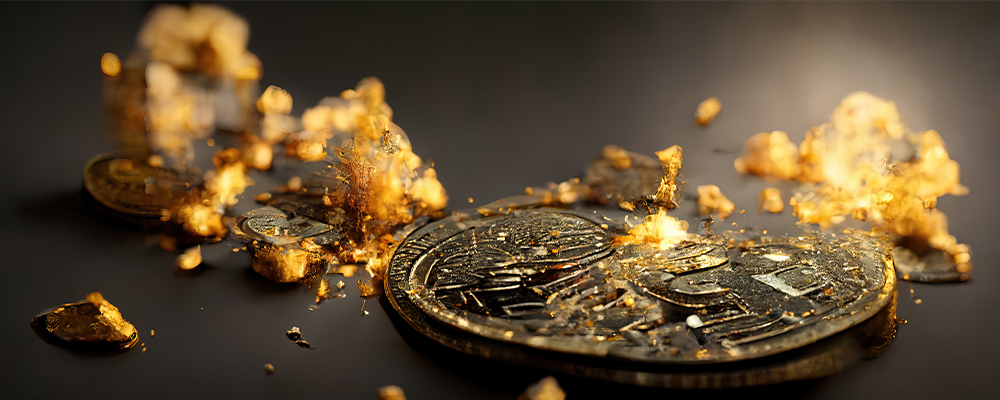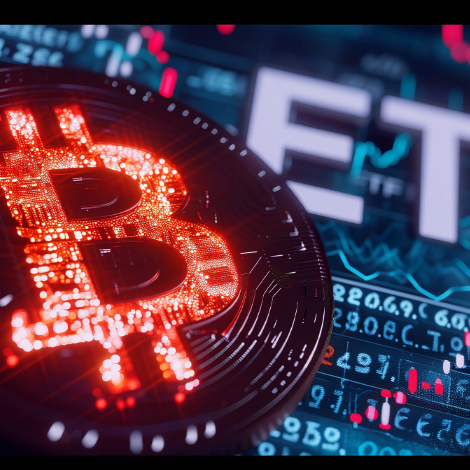Takahide Kiuchi's View - Insight into World Economic Trends :
The FTX Collapse and the Demise of the Cryptocurrency (Virtual Currency) Boom
#Market Analysis
#Takahide Kiuchi
Dec. 09, 2022
FTX Trading, once a leading cryptocurrency (virtual currency) exchange, filed for Chapter 11 bankruptcy under the U.S. Bankruptcy Code on November 11 of this year. This is shaping up to be the largest business failure ever in the cryptocurrency or “crypto” world. In addition, FTX founder and CEO Sam Bankman-Fried has resigned. I believe that alongside the collapse of the stablecoin U.S. Terra this past spring, this incident will become symbolic of the demise of the cryptocurrency boom.
“Alchemical” management methods reach an impasse
Once FTX had filed for Chapter 11 bankruptcy, John J. Ray was appointed as its new CEO. Ray is a corporate restructuring specialist with a wealth of experience, including overseeing the liquidation of the energy company Enron, which went bankrupt back in 2001.
In materials submitted by Ray to the courts on November 17, he reported that FTX had committed widespread misappropriation of assets and accounting fraud, with a complete lack of corporate governance. Ray went on to say that “Never in my career have I seen such a complete failure of corporate controls and such a complete absence of trustworthy financial information as occurred here”.
According to Ray, the management of FTX was left in the hands of “a very small group of grossly inexperienced and unsophisticated individuals”, and he noted that many of the companies within the FTX Group had never once held a board meeting. It also appears that virtually none of the company’s verified financial statements had ever been audited. Furthermore, the investigation now underway has exposed one instance of alleged fraud after another, including loaning its customers’ assets without their consent, and privately misappropriating the company’s own assets to members or advisors for things like home purchases.
The bankruptcy of FTX involves more than just cryptocurrency trading, however. It also has to do with how the company used the illiquid FTX tokens it issued (called FTT) to make payments and as collateral for borrowing, while expanding its business by acquiring cryptocurrency-related firms for instance—that is to say, FTX rapidly developed its own so-called alchemical management methods, which ultimately reached an impasse.
Given its lack of sufficient financial information disclosures, plus the failure of governance to monitor its business from the outside, it appears that the risks ballooned while the real circumstances went unrecognized by the outside world.
What’s more, there were even illegal outflows of assets from FTX. It seems that after the company filed for Chapter 11 bankruptcy, unauthorized withdrawals were made over the internet, with customers’ crypto-assets being lost. It subsequently became apparent that FTX had carelessly been managing customer accounts (or wallets) using hot wallets, which are vulnerable to hacking, without disconnecting them from the internet.
With its lack of information disclosures, lack of governance, failure to separately manage its customers’ assets, misappropriation of those assets, and improper asset management using hot wallets, FTX thus seems to have followed many of the various problems that have been exposed in the crypto industry, as seen in previous cases like the collapse of cryptocurrency exchanges or the fall of U.S. Terra. We can thus see that there has been no cleansing of the industry.
Has the trend of adopting loose regulations based on the concept that “cryptocurrencies are products” been derailed?
With the bankruptcy and collapse of FTX, the debate over enhancing regulations on cryptocurrencies has suddenly intensified. This spring, President Biden—looking to enact comprehensive cryptocurrency regulations—ordered various government agencies to identify problems relating to these currencies and blockchains. In response, the movement to augment regulations on cryptocurrencies has grown.
The aspect of this that has long been the subject of debate in the U.S. is whether cryptocurrencies are products or securities. Depending on which of these categories they fall into, the form of regulation will significantly differ. If they’re deemed to be securities rather than products and to therefore fall under securities laws, the regulations will generally be more stringent. SEC Chairperson Gary Gensler has advocated for these regulations to be based on securities laws for a long time. In some sense as well, this debate is like a turf war among regulatory authorities over cryptocurrencies.
Until the collapse of FTX, Congress had been deliberating over introducing relatively loose regulations, operating from the notion that cryptocurrencies are products. This is exemplified by the bipartisan cryptocurrency bill that was put together by the Senate Agriculture Committee. It would appear that the activities of lobbyists from the cryptocurrency world had a major influence in making this bill happen. If securities laws were to be applied based on the concept that cryptocurrencies are securities, stricter regulations could very well lead to a major loss in earnings for the crypto industry. The industry therefore took the initiative and pushed for comparatively lenient regulations to be adopted. Introducing a certain degree of regulation would elevate the trustworthiness of the crypto industry and thereby attract more clients to it, leading instead to greater profits, or so the thinking likely went.
The central player involved in such lobbyist activities was FTX’s founder, Sam Bankman-Fried.
In a sense, with FTX now collapsed, Bankman-Fried himself has dashed any chance that regulations favorable for the cryptocurrency world will be introduced, despite his efforts to bring that about. It seems that the winds have suddenly shifted, making it more likely for stricter regulations to be introduced as securities laws are applied, for instance.
The FTX financial crisis has caused Bitcoin’s value to drop to pre-boom levels
The collapse of FTX isn’t just a problem for that company—it has started to dramatically shake the entire crypto industry. This is because not only has the FTX collapse greatly damaged the credibility of the crypto industry, but there is now also a heightened sense among investors that going forward, regulations could abruptly become stronger for the crypto industry as a whole and cause profit expectations to tumble.
The price of Bitcoin , the flagship cryptocurrency, dropped by around 25% in just two short days between November 7—just prior to the FTX collapse—and November 9. It subsequently kept on falling, and most recently it stood at around $17,000, the same level seen two years ago around November 2020. This was a time just before the cryptocurrency boom took off, and the fact that the price of Bitcoin has dropped that far can, perhaps, be said to symbolically mark the demise of the cryptocurrency boom.
What set off the crypto boom around the end of 2020 was the emergence of the COVID-19 pandemic that went into full swing near the beginning of that year. To avoid the risk of getting infected, individuals began to spend more and more time at home, which turned many people on to stock investing in their free time. They also expanded these activities to include investing in cryptocurrencies at the same time.
Moreover, in March 2020, to stabilize the economy and financial market conditions which had taken a hit from the pandemic, the U.S. Federal Reserve Board (FRB) enacted drastic monetary easing measures to abruptly bring policy interest rates down to around 0%. The ultra-low interest rate environment that resulted proved to be a strong tailwind for the cryptocurrency market.
With ultra-low interest rates, the expected rate of return that there would normally be for investments in financial assets is significantly lower, and volatility (price fluctuation) is also reduced, meaning that opportunities for substantial profit won’t be obtainable. That being the case, a growing number of investors were out there who were accepting the risks and investing more in highly volatile cryptocurrencies.
Following these two paths, one might say, the COVID-19 pandemic gave birth to the cryptocurrency boom. However, with the pandemic now abating, the tendency among individuals to “nest” at home has gradually been fading away. Furthermore, in March of this year the FRB began enacting rate hikes (raising policy interest rates) to deal with inflation, and policy interest rates have of late climbed rapidly to around 4%. As a result, one-year Treasury bills are yielding as much as nearly 5% in recent months.
FTX had guaranteed a high interest rate of up to 8% annually to customers for the crypto who had kept their assets on the platform. However, the interest rate environment is now such that short-term government securities and other safe financial investments are reliably yielding around 5% in profits annually. For this reason, a movement of capital is now underway from cryptocurrencies to financial assets.
A harbinger of financial market chaos?
Given such a major change in the financial environment, the loss of the cryptocurrency market’s credibility and fears of tighter regulations—spurred by the collapse of U.S. Terra in May and now the FTX bankruptcy—have suddenly brought the crypto boom to an end.
Nevertheless, it’s not only cryptocurrencies that will be dealt a blow by rising interest rates. High-yield bonds, securitized instruments, and other high-risk assets that had amassed capital while interest rates were low and whose prices had gone up will likely also face strong headwinds. Currently, there are no signs of any chaos on the scale seen with the cryptocurrency market, but going forward, if skyrocketing interest rates lead U.S. economic conditions to deteriorate and companies face rising credit risks, then coupled with rising interest rates these high-risk assets could potentially be hit by significant price adjustments.
The ones who own many of those high-risk assets are funds such as hedge funds, mutual funds, and ETFs (exchange-traded funds). If the prices of high-risk assets were to start falling, the customers of these funds would begin withdrawing their capital, and in response the funds would then be forced to dump many of the financial assets on hand. That would readily lead to major chaos in the financial markets overall.
In light of all this, the demise of the cryptocurrency boom—made more decisive now with the collapse of FTX—may well be a harbinger of chaos for the financial markets as a whole, which we may see happen in the times ahead.







